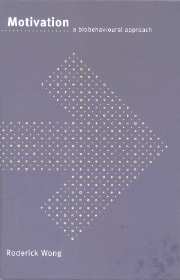Book contents
- Frontmatter
- Contents
- Preface and acknowledgements
- 1 Introduction and perspective
- 2 Mating and reproductive activities
- 3 Parental/maternal activities
- 4 Feeding activities
- 5 Food selection
- 6 Drinking activities
- 7 Stimulus seeking and exploratory activities
- 8 Aversive motivation systems: fear, frustration and aggression
- 9 Social motivation: attachment and altruism
- 10 Conclusions and retrospective
- References
- Author index
- Subject index
Preface and acknowledgements
Published online by Cambridge University Press: 10 December 2009
- Frontmatter
- Contents
- Preface and acknowledgements
- 1 Introduction and perspective
- 2 Mating and reproductive activities
- 3 Parental/maternal activities
- 4 Feeding activities
- 5 Food selection
- 6 Drinking activities
- 7 Stimulus seeking and exploratory activities
- 8 Aversive motivation systems: fear, frustration and aggression
- 9 Social motivation: attachment and altruism
- 10 Conclusions and retrospective
- References
- Author index
- Subject index
Summary
I wrote this book as a text for intermediate and advanced level courses in motivation, and as supplementary material for courses on comparative psychology and biopsychology. Although there may be overlap with material in other current textbooks on motivation, the approach and treatment taken in this one is quite different. It does not present an exhaustive review of facts and anthology of theories in the field, but instead, attempts to cover selected material linked in a coherent fashion. In doing so I have attempted to make some sense of the diverse range of topics that are covered in other motivation texts. I have also attempted to indicate the interplay of material on animal and human research, and hope that the reader will find the presentation a natural one in which the transition between the two appears unforced.
The organisation of each of the substantive chapters begins with a consideration of ‘classic’ theories and studies of a specific motivated activity, and is followed by discussion of selected current developments indicating further complexities of the issue. Even though some earlier theories have been superseded by recent models, like Mook (1996), I believe that students will benefit from such exposure, and consequently, develop a better understanding of how current models and research evolved. Shortly after I had completed this book, I encountered others offering new insights that were not available during my preparation. Within the limited time remaining for the production of this book, I have attempted to fine-tune some of my presentation with some ideas that I have learned from these new works.
- Type
- Chapter
- Information
- MotivationA Biobehavioural Approach, pp. vi - xPublisher: Cambridge University PressPrint publication year: 2000



